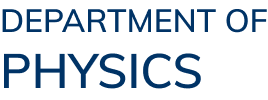Abstract
The exotic electronic properties appearing in heterostructures fabricated from graphene and hexagonal boron nitride (hBN), such as Hofstadter butterfly, fractional Chern insulators and unconventional ferroelectricity, make them an attractive system for investigating novel physics in two-dimensional (2D) materials. In this thesis, we placed monolayer graphene on twisted hBN (t-hBN) layers, conducted electronic transport measurements at low temperature, and realized intriguing phenomena, including magnetic Bloch states at integer flux quanta and anomalous charge neutrality point (CNP) bending effect.
The dissertation begins with a brief introduction of 2D materials. For graphene, hBN and their heterostructures, the crystal structures, energy bands and transport properties are discussed. As for experimental technique, device fabrication and characterization methods are presented subsequently, such as transfer method, nanofabrication technique and transport measurement.
In chapter 3, we demonstrated a super-moiré strategy to overcome the lattice relaxation at marginal twist region, to construct ~ 50 nm moiré potential. By aligning monolayer graphene (G) with 1.0° t-hBN layers, a 63.2 nm bichromatic G/t-hBN super-moiré is constructed. Under magnetic field BB , magnetic Bloch states at ΦΦ/ΦΦ0=1-9 are achieved and observed as integer Brown-Zak oscillations. This work opens promising avenues to study unexplored Hofstadter butterfly, explore emergent topological order at integer flux quanta and engineer long-wavelength periodic modulations.
In chapter 4, we utilized t-hBN moiré potential to engineer the band structure of graphene. Experimentally, prominent CNP bending effect appears, in sharp contrast to the straight line in regular graphene. Our electrostatic model and band calculation suggest that there could be localized states in t-hBN layers, which can trap charges and prevent them from contributing to transport, leading to the reduced efficiency of top gate. This method to construct nanometer-scale potential without lithography exhibits promising application prospects for nanotechnology.
